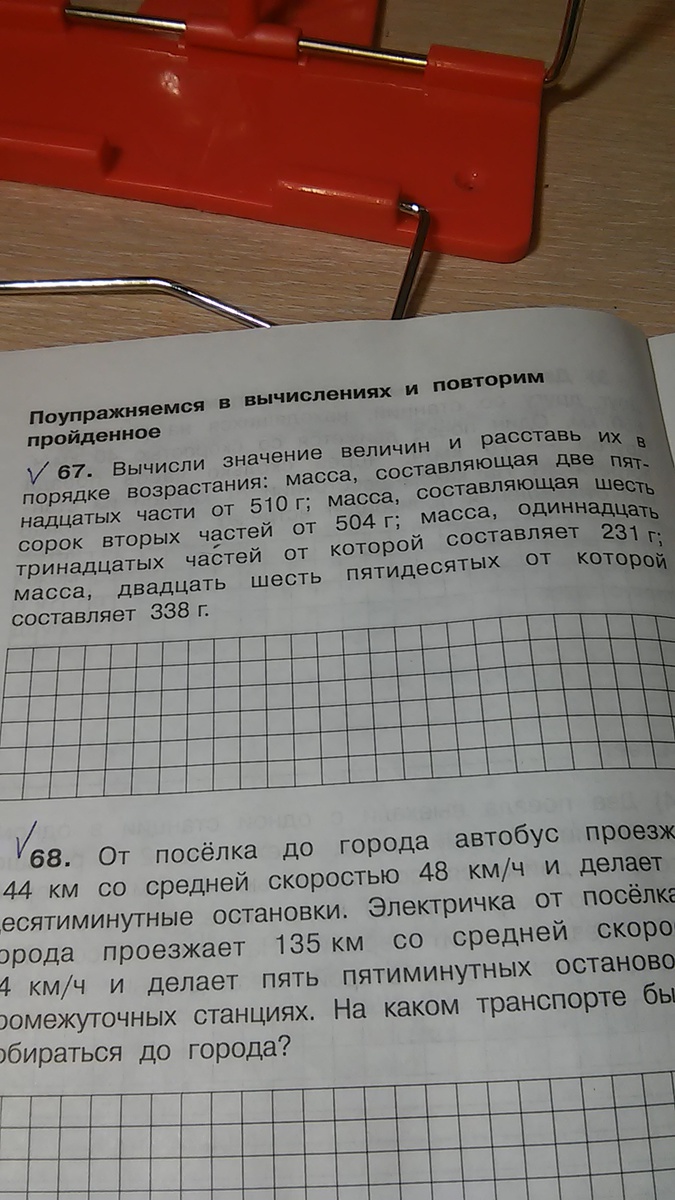Предмет: Математика,
автор: Аноним
помогите плииззз!#!!!!!!!!!
Приложения:

Ответы
Автор ответа:
0
№67.
510г/15=34 34*2=68г - две пятнадцатых от 510г
504г/42=12г 12*6=72г - шесть сорок вторых от 504г
231г/30=7,7г 7,7*11=84,7г - одиннадцать тридцатых от 231г
338г/50=6,76 6,76*26=176,76 - двадцать шесть пятидесятых от 338г
и расположить по возрастанию 68, 72, 84,7, 176,76
№68.
не видно данных задачи.
510г/15=34 34*2=68г - две пятнадцатых от 510г
504г/42=12г 12*6=72г - шесть сорок вторых от 504г
231г/30=7,7г 7,7*11=84,7г - одиннадцать тридцатых от 231г
338г/50=6,76 6,76*26=176,76 - двадцать шесть пятидесятых от 338г
и расположить по возрастанию 68, 72, 84,7, 176,76
№68.
не видно данных задачи.
Похожие вопросы
Предмет: Французский язык,
автор: vikasizova525
Предмет: Литература,
автор: alisadegtyareva2009
Предмет: Русский язык,
автор: maralbaljan03
Предмет: Математика,
автор: Kristi0726